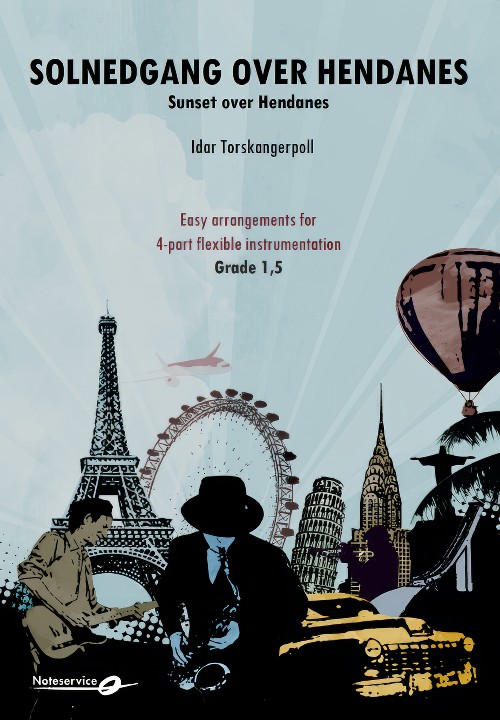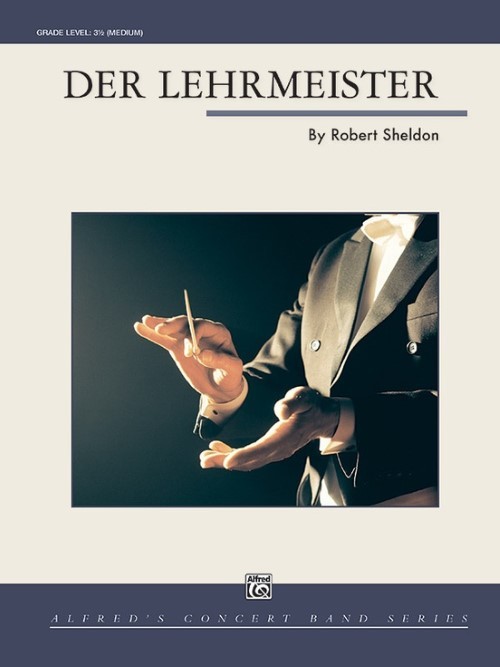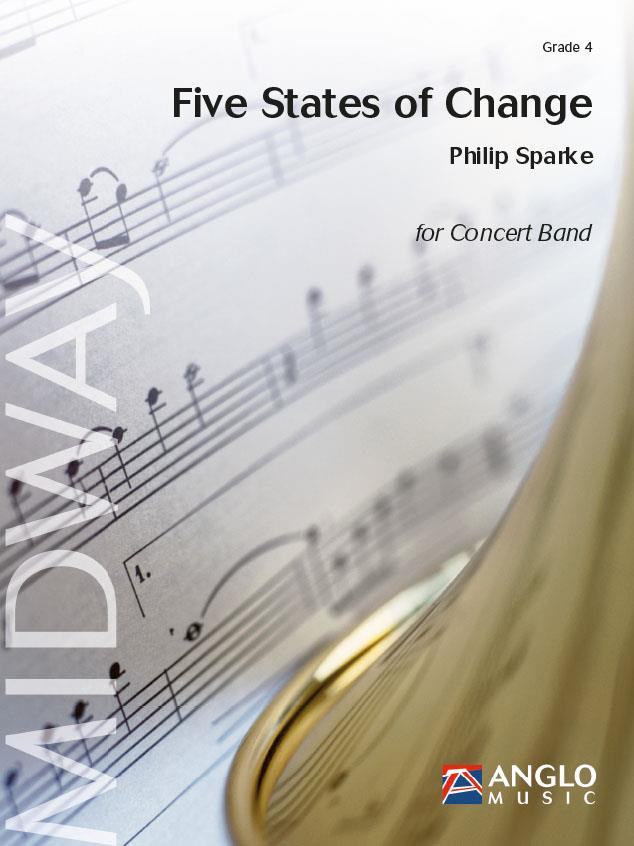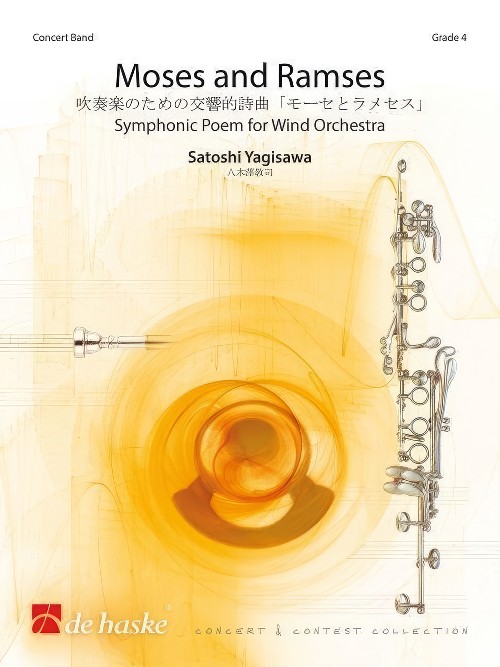Results
-
 £211.80
£211.80Karneval i Paris - Johan S. Svendsen
Johan Svendsen (1840-1911) composed "Carnival in Paris" in 1872, inspired by the energy and vibrancy of the Parisian carnival celebrations. The piece showcases a variety of moods and orchestral colours, ranging from jubilant and playful sections to more lyrical and elegant passages. It is a lively and colourful work that reflects Svendsen's skill in orchestration and his ability to capture vivid, festive atmospheres in music. In "Carnival in Paris", his Nordic musical roots meet the cosmopolitan influences he encountered while living and working in major European cities. The work has become one of Svendsen's most popular and is frequently performed in concert halls and festivals. About My Transcriptions for Wind Bands Ever since I started playing the clarinet at 8 or 9 years old in the school band "Blveisene" in my hometown of Gjvik, playing transcriptions of orchestral music has been a natural part of the repertoire. In regional bands, Norway's National Youth Band, and during my 10 years in a Military band, I played many such transcriptions. These transcriptions often included handwritten parts, masterfully crafted by colleagues in a time when music notation software didn't exist. Similarly, the scores were often incomplete, typically featuring just a solo clarinet part and condensed score in Bb. The transcriptions also contained parts for instruments like the Eb cornet and multiple tenor horns, but no saxophones, which made them less suitable for modern wind bands. The rise of many skilled Concert Bands and the increasing demands for scores and accessibility made me realize that someone needed to preserve this tradition. The reason I've transcribed these works is to ensure that you can play or conduct a repertoire that I believe has a rightful place in Norwegian Wind Band tradition. These transcriptions are my contribution to preserving some of the unique works in Norwegian music literature. Creating a transcription is a complex task, and I believe the score of "Carnival in Paris" is one of the most intricate I've undertaken. The first part of the process involves entering the entire orchestral score into music notation software. This is time-consuming and requires meticulous work. The next step is to check several editions to see if there are any discrepancies. Mistakes are often found in orchestral material, which can lead to further errors in the transcription. After that, I listen to many different recordings while following along with the score, paying attention to how different conductors emphasize balance and timbre. Gradually, I begin to note down passages I believe will work well for wind bands. One particular challenge in this piece is that the woodwinds and strings operate in the same register. In the original, the tonal difference between the strings and winds helps to clarify the individual musical lines. In the transcription, I've tried to address this by separating the lines, for example through octave adjustments, and highlighting them without compromising other aspects. I've also used some mallet percussion to broaden the tonal palette. There are countless decisions to be made to create a product that will hopefully allow future generations of wind band musicians to play this repertoire. - Stig Nordhagen -
Estimated dispatch 7-14 working days
-
 £174.10
£174.10Graceful Ghost - William Bolcom
I came to know of this piece when hearing famous Norwegian ragtime pianist Morten Gunnar Larsen playing it at a concert with the Norwegian Navy Band Bergen.I was struck by its melancholic beauty and wanted to arrange it for band. Ragtimes are rarely in a minor key (which this one is) and when you first hear it, you might think it was written around the time when Scott Joplin was the main ragtime composer. But, if you listen more carefully, you notice that some of the harmoniesare more advanced than one might expect in traditional ragtime, giving the piece a slightly more contemporary feel. The composer William Bolcom wrote Graceful Ghost in 1970 to honour the memoryof his father and it is one of his mostpopular pieces.
Estimated dispatch 7-14 working days
-
 £154.60
£154.60Blackbird Special
"Blackbird Special" is a song by American band Dirty Dozen Brass Band.The song is an entertainment piece, a good concert opener or encore.When used as a concert opener one may let the different sections of the band enter the stage one by one playing in order of appearance.Percussion section may play their parts ad lib. The most important is the groove of the piece.
Estimated dispatch 7-14 working days
-
£123.00
The Spartan Warriors (CB) - Pimpanit Karoonyavanich
The Sparta army is well-known in the time of the ancient Greek that the warriors would never lay down their weapons for any reason. The theme from the beginning of the piece strongly declares that the warriors are always willing to fight for their homeland. The slow movement reflects the feeling of the warriors when they are far away from their loved one due to their duty. The composers intently uses the harmony that gives a hopeful feeling but also painful at the same time. The audience can hear the bell during the piece. It is the symbol of the clock towers which located in every cities. Everytime that the warriors leaves a city, the sound of the bell becomes softer and softer until it disappears. Only at the end of the piece that the bell rings only one last time after the majestical theme. It's the bell of victory!
Estimated dispatch 7-14 working days
-
 £59.80
£59.80Solnedgang over Hendanes (Sunset over Hendanes) (Flexible Ensemble - Score and Parts) - Torskangerpoll, Idar
This piece describes a sunset over Hendanes, a viewpoint near Torskangerpoll, the composer's home village. From this place one has a 180-degree view over the North sea, and one can see the sun setting into the ocean in the west. On hot summer s nights this is a particular beautiful spectacle. This piece is for bands looking for a calm and expressive item to play. There is melodic material in all parts and this is building a contrasted expression throughout the piece.Duration: 2.30
Estimated dispatch 7-14 working days
-
 £77.50
£77.50Der Lehrmeister (Concert Band - Score and Parts) - Sheldon, Robert
The title of this piece translates from German to "The Master Teacher." Commissioned by the Florida Bandmasters Association in memory of Jack Crew, this piece serves to honor the memory of one of the all-time great teachers and musicians in our world of band music. The piece is written in a style reminiscent of Richard Strauss, one of Jack's favourite composers. Duration: 5:10
Estimated dispatch 7-14 working days
-
 £183.99
£183.99Five States of Change (Concert Band - Score and Parts) - Sparke, Philip
Five States of Change was commissioned by Kunstfactor for the 4th section of the Dutch National Brass Band Championships (NBK) 2011. It is dedicated to Jappie Dijkstra and the Music Information Centre (MUI), Arnhem, Holland, in acknowledgement of their outstanding work in developing band repertoire.The composer writes:The idea for the piece came when I was reading an article about a branch of Chinese philosophy which is abbreviated as Wu Xing*, which has no exact translation but can mean, for example, five elements, five phases or five states of change. It is central to all elements of Chinese thought, including science, philosophy, medicine and astrology, and in simple terms tries to create various cyclic relationships between five elements in all walks of life. An example is: Earth - Metal - Water - Wood - Fire - (Earth) etc. where (in one cycle) earth bears metal, metal changes to liquid (water) when heated, water helps trees grow, wood burns to create fire, fire produces ash (earth) and the cycle continues. I was particularly interested in the cycle of emotions:- Meditation - Sorrow - Fear - Anger - Joy - (Meditation) etc. and thought this cyclic principle would provide an effective emotional journey for a piece of music. So Five States of Change has five equal sections which loosely characterise this emotional cycle. I have tried to make the music grow organically, with minimal repetition, and each movement evolves from the musical elements at the end of the previous one, with the opening material appearing, transformed, at the end of the piece to complete the cycle.*in full Wu zhong liu xing zhi chi or the five types of chi dominating at different times.- Philip SparkeDuration: 12:15
Estimated dispatch 7-14 working days
-
 £149.99
£149.99Moses and Ramses (Concert Band - Score and Parts) - Yagisawa, Satoshi
This piece was commissioned by Matsudo Citizen Wind Orchestra for their 30th anniversary concert and premiered by the band conducted by Kenichiro Hasunuma in July 2009. This piece is typical of Satoshi Yagisawa in that it depicts a magnificent spectacle. This one is set in ancient Egypt and is based on the story depicted in the famous film "The Ten Commandments" (1956, directed by Cecil B. DeMille). One day Moses, who was raised by the rich royal family, found out that he was originally Hebrew. The Hebrews had been forced to live as slaves. Ramses, the prince directly descended from the Pharaoh, envied Moses' strength and popularity. After internal argument Moses decides to deliver the Hebrew from the Pharaoh's tyranny and escape from Egypt with them.The music starts with brilliant royal fanfare and depicts magnificent architecture, the Hebrew people forced into hard labour, and the slaves escaping from the Pharaoh's tyranny. At the climax they are at crisis point, trapped by the sea. Moses waves his staff and the miracle happens; the sea parts and Hebrew people successfully escape. Following on from Perseus - A Hero's Quest in the Heavens, this work Moses and Ramses is another piece written in the dramatic style favoured by Satoshi Yagisawa.Duration: 9:30
Estimated dispatch 7-14 working days
-
 £154.60
£154.60Strilefunk - Torstein Aagaard-Nilsen
The piece was commissioned by the Norwegian Band Federation Hordaland and conductor Arvid Anthun for the 40th anniversary of Hordaland Youth Band in 2021. The piece is dedicated to Arvid Anthun.Several of our collaborations have focused on arranging and performing Norwegian folk music. This includes projects such as the one Manger Musikklag undertook in the late 90s, concerts, and recording sessions with Jlster Musikklag alongside the fiddler Sigmund Eiks, and now, for the anniversary concert of Hordaland Youth Band.Arvid desired folk music in a modern style. We discussed, among other things, Valter Aamodt's "Hordarapsodi," and he mentioned my Norwegian Dance, a funky piece where I incorporate a folk tune as a crucial element. Aamodt uses the melody "Eg rodde meg ut," or "Strilevise," as it is also known, in his rhapsody.The concept for Strilefunk was therefore to utilize one of the melodies Aamodt had used and additionally draw on the rhythmic experiences that we, as modern band musicians, bring from other genres.Torstein Aagaard-Nilsen
Estimated dispatch 7-14 working days
-
 £77.50
£77.50Der Lehrmeister - Robert Sheldon
The title of this piece translates from German to "The Master Teacher." Commissioned by the Florida Bandmasters Association in memory of Jack Crew, this piece serves to honor the memory of one of the all-time great teachers and musicians in our world of band music. The piece is written in a style reminiscent of Richard Strauss, one of Jack's favorite composers. (5:10)
Estimated dispatch 7-14 working days
